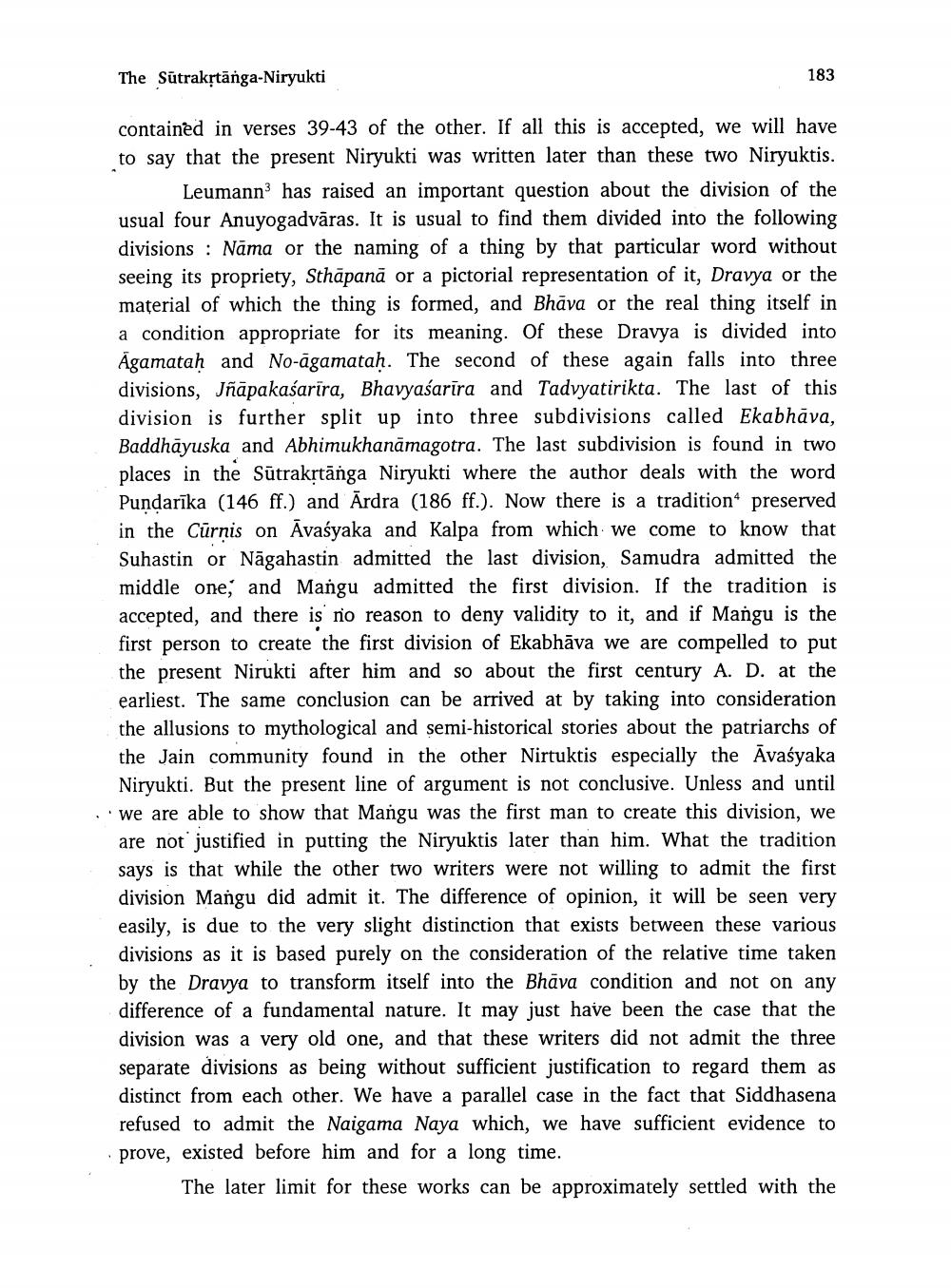________________
The Sūtrakstānga-Niryukti
183
contained in verses 39-43 of the other. If all this is accepted, we will have to say that the present Niryukti was written later than these two Niryuktis.
Leumann has raised an important question about the division of the usual four Anuyogadvāras. It is usual to find them divided into the following divisions : Nāma or the naming of a thing by that particular word without seeing its propriety, Sthāpanā or a pictorial representation of it, Dravya or the material of which the thing is formed, and Bhāva or the real thing itself in a condition appropriate for its meaning. Of these Dravya is divided into Ägamatah and No-āgamatah. The second of these again falls into three divisions, Jñāpakaśarira, Bhavyaśarīra and Tadvyatirikta. The last of this division is further split up into three subdivisions called Ekabhāva, Baddhāyuska and Abhimukhanāmagotra. The last subdivision is found in two places in the Sūtrakstānga Niryukti where the author deals with the word Pundarīka (146 ff.) and Ardra (186 ff.). Now there is a tradition preserved in the Cūrnis on Āvaśyaka and Kalpa from which we come to know that Suhastin or Nāgahastin admitted the last division, Samudra admitted the middle one, and Mangu admitted the first division. If the tradition is accepted, and there is no reason to deny validity to it, and if Mangu is the first person to create the first division of Ekabhāva we are compelled to put the present Nirukti after him and so about the first century A. D. at the earliest. The same conclusion can be arrived at by taking into consideration the allusions to mythological and semi-historical stories about the patriarchs of the Jain community found in the other Nirtuktis especially the Āvaśyaka Niryukti. But the present line of argument is not conclusive. Unless and until we are able to show that Mangu was the first man to create this division, we are not justified in putting the Niryuktis later than him. What the tradition says is that while the other two writers were not willing to admit the first division Mangu did admit it. The difference of opinion, it will be seen very easily, is due to the very slight distinction that exists between these various divisions as it is based purely on the consideration of the relative time taken by the Dravya to transform itself into the Bhāva condition and not on any difference of a fundamental nature. It may just have been the case that the division was a very old one, and that these writers did not admit the three separate divisions as being without sufficient justification to regard them as distinct from each other. We have a parallel case in the fact that Siddhasena refused to admit the Naigama Naya which, we have sufficient evidence to prove, existed before him and for a long time.
The later limit for these works can be approximately settled with the




